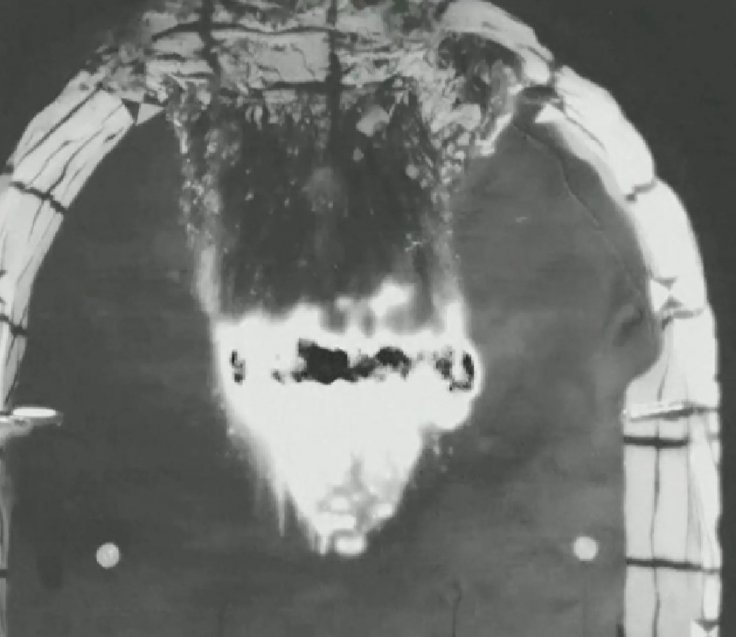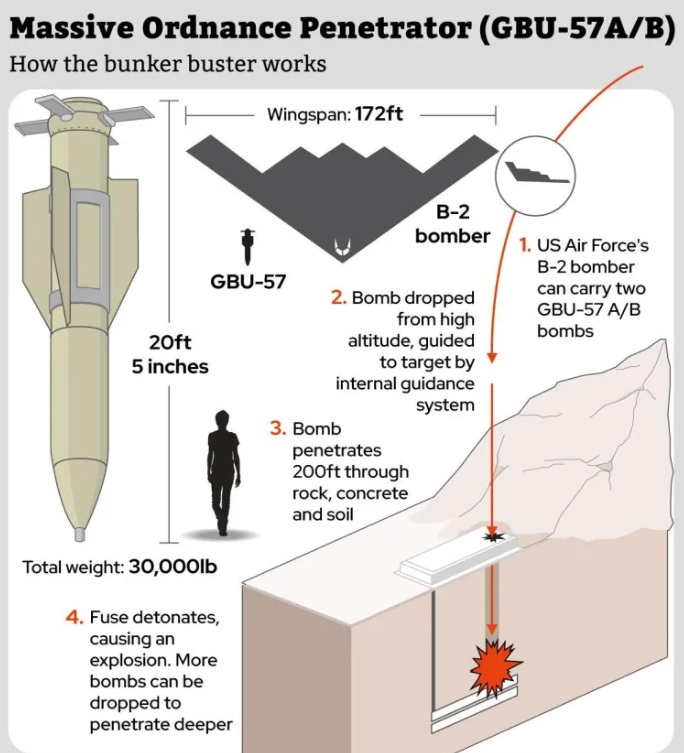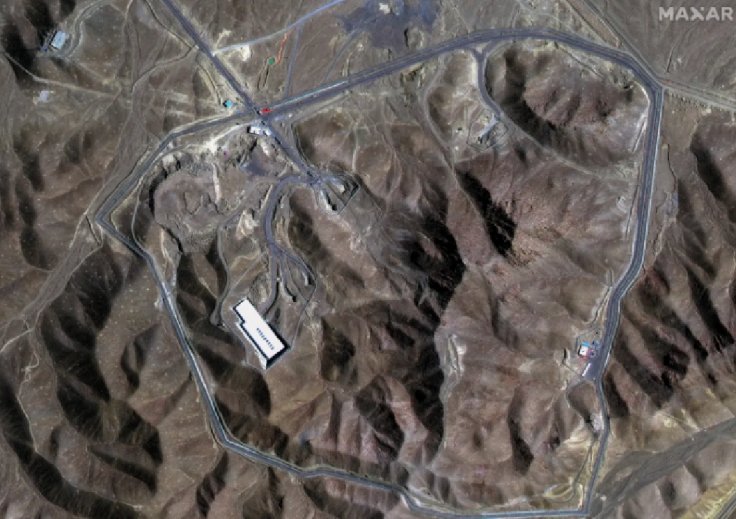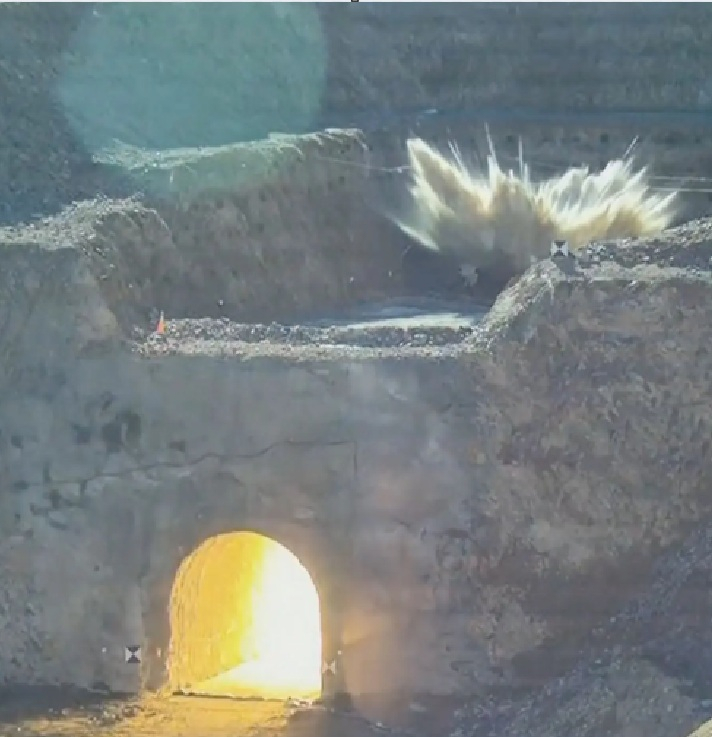The Pentagon has released dramatic footage that shows the power of the 30,000-pound heavy-duty bunker-buster bombs used in strikes against Iran, designed to demolish fortified targets deep underground. This came as Iran admitted Wednesday that its nuclear sites suffered massive damage after the bombings.
The chilling video captures a GBU-57 Massive Ordnance Penetrator (MOP) crashing into its target, sending up a huge cloud of dust just seconds before a massive fireball erupts through a ventilation shaft at the Fordow uranium enrichment facility. According to the pilots, the explosion was unlike anything they had ever seen, describing it as “the brightest explosion” they had witnessed — saying “it literally looked like daylight.”
Image of Devastation
Department of Defense
“Unlike a normal surface bomb, you won’t see an impact crater because they’re designed to deeply bury and then function,” Chairman of the Joint Chiefs of Staff Lt. Gen. Dan Caine explained to reporters during a press briefing Thursday.
“All six weapons at each vent at Fordow [uranium enrichment plant] went exactly where they were intended to go.”

Department of Defense
During the briefing, another camera angle showed a slow-motion shot of an MOP hitting its target, cutting cleanly through the curved interior of a second ventilation shaft without triggering an explosion.
General Caine also presented a third video, showing the MOP smoothly entering what he referred to as the “mission space.”
“A bomb has three effects that causes damage: blast, fragmentation and overpressure,” he explained. “In this case, the primary kill mechanisms in the mission space was a mix of overpressure and blast.”
The Power of Bunker Busters
Bunker Busters are the largest conventional (non-nuclear) bombs in the U.S. military’s arsenal. The bomb was necessary because the target — the Fordow uranium enrichment plant — is buried roughly 300 feet deep within a mountain near the city of Qom, about two hours south of Tehran.

US Department of Defense
The bomb, known as the GBU-57A/B Massive Ordnance Penetrator, was developed by Boeing specifically for use by the U.S. Air Force.
Due to its massive weight, the bomb can only be deployed by a B-2 Spirit stealth bomber — an advanced aircraft that is not part of Israel’s air force arsenal.
“The United States controls the bomber and the bomb,” John Spencer, chair of urban warfare studies at the Modern War Institute at West Point military academy, recently told The New York Post.

Maxar Technologies
The missile cost the U.S. Army more than $500 million to develop and was specifically engineered to burrow deep into the Fordow facility to destroy its nuclear centrifuges, according to a 2013 report by The Wall Street Journal.
At the time, the report noted that 20 of these bombs had been produced for the U.S. military.
Another variant of a “bunker buster” is the GBU-37, which weighs 5,000 pounds.
While the U.S. has provided Israel with less powerful bunker-busting munitions, it has refused to share the Massive Ordnance Penetrator with any allied nation.



